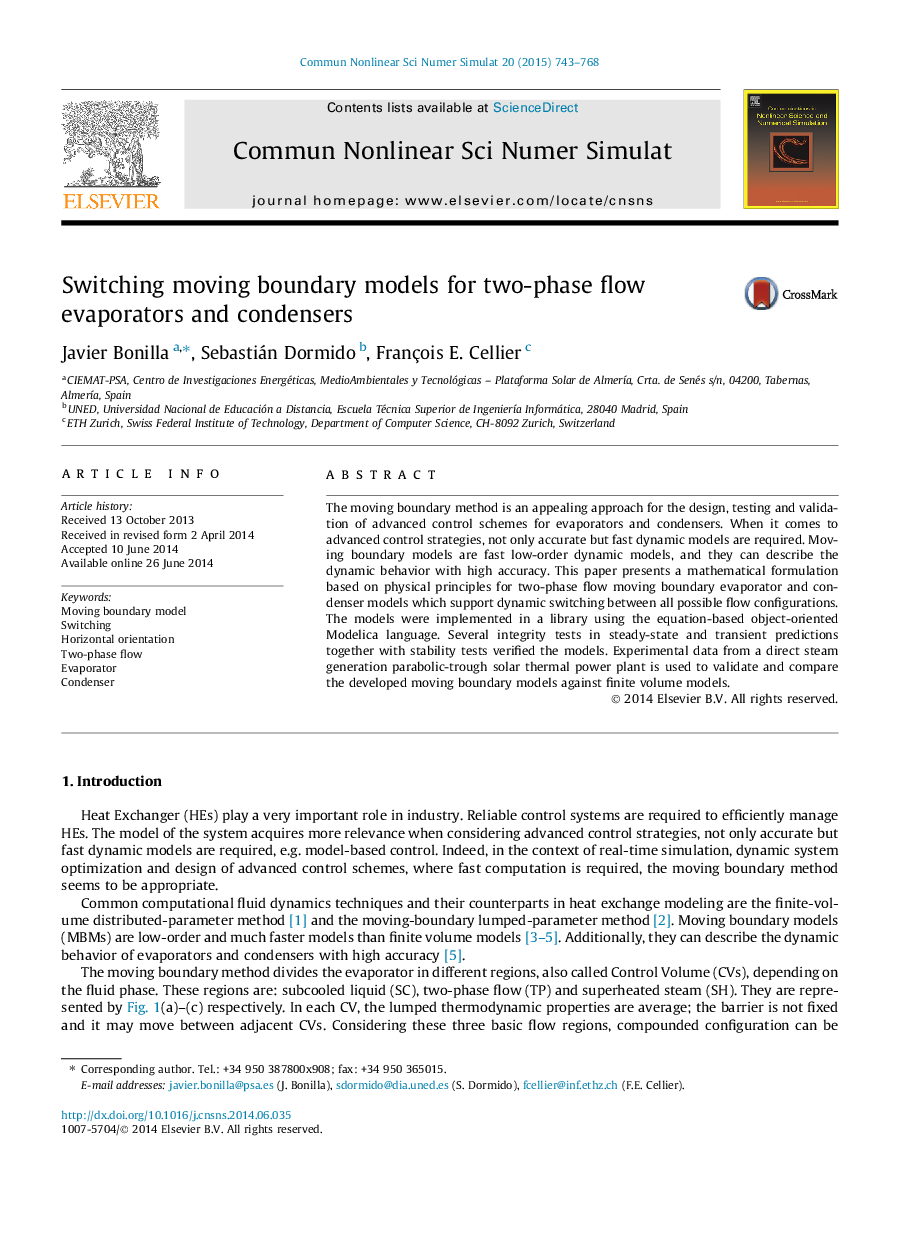| Article ID | Journal | Published Year | Pages | File Type |
|---|---|---|---|---|
| 758674 | Communications in Nonlinear Science and Numerical Simulation | 2015 | 26 Pages |
•Moving boundary two-phase flow evaporator and condenser models.•Implementation in a equation-based object-oriented library in Modelica language.•Validation of the moving boundary evaporator model against experimental data.•Model integrity and switching stability under real conditions.•Comparison of moving boundary and finite volume models in terms of accuracy and time.
The moving boundary method is an appealing approach for the design, testing and validation of advanced control schemes for evaporators and condensers. When it comes to advanced control strategies, not only accurate but fast dynamic models are required. Moving boundary models are fast low-order dynamic models, and they can describe the dynamic behavior with high accuracy. This paper presents a mathematical formulation based on physical principles for two-phase flow moving boundary evaporator and condenser models which support dynamic switching between all possible flow configurations. The models were implemented in a library using the equation-based object-oriented Modelica language. Several integrity tests in steady-state and transient predictions together with stability tests verified the models. Experimental data from a direct steam generation parabolic-trough solar thermal power plant is used to validate and compare the developed moving boundary models against finite volume models.
